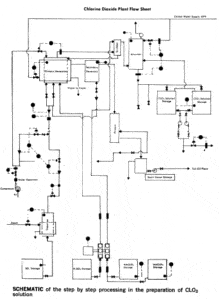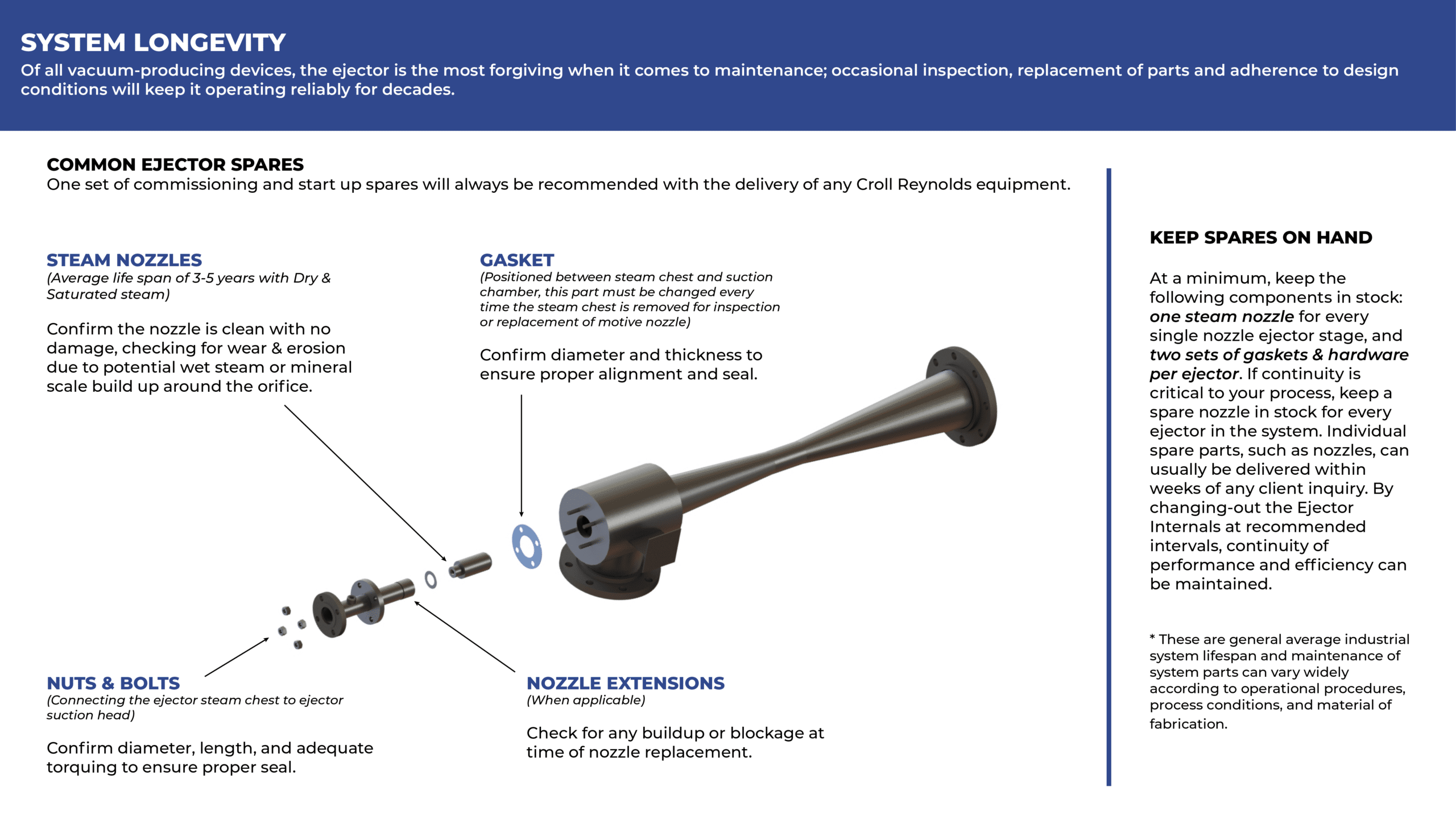
As part of the continuing modernization program at the Bogalusa Mill, Crown Zellerbach engineers specified that chilled water be made available for use in the bleaching agent preparation system. This move is in accord with the general industry trend toward the wider use of temperature controlled water in processing operations. They further specified that cooling be accomplished with steam jet vacuum equipment. The many economies and advantages of steam jet vacuum refrigeration are not new to the paper industry. With the growing high cost of maintenance, the fact that steam ejector systems operate without moving parts and that they are simple inexpensive devices as compared with high speed rotary or reciprocating compressors is demanding new attention from cost conscious engineers and plant managers.
Another advantage of vacuum refrigeration is the absence of chemical refrigerants and absorption solutions. While this is important as an initial cost factor, a more important advantage is one of safety in operation and maintenance. Leakage in a steam jet refrigeration system, unlike other refrigeration systems, is not a matter of corrosive or toxic chemicals leading from the system, but of excessive air leaking into the system. If a leak should develop in a vacuum refrigeration system, it can easily be detected and repaired without danger. Other refrigeration systems generally require factory trained experts to handle repairs.
A steam jet refrigeration unit also has the advantage of being highly flexible in capacity. By accepting a slightly higher chilled water temperature, the user can obtain a substantial increase in tonnage with no danger of overloading the vacuum equipment. Additional capacity is obtained merely by increasing the flow of water through the “chill tank” as required. Inversely, if less water is circulated, colder chilled water can be obtained, or if colder water is not desirable, a temperature control system can be used to maintain the required temperature between zero and one hundred per cent capacity conditions, with a proportional saving of steam.
From the viewpoint of continuing costs, steam jet vacuum equipment offers advantages in terms of minimum supervision and its ability to function equally well indoors or out. Another aspect of interest, particularly in hard water areas, is the fact that scale build-up, which is a severe problem with mechanical refrigerating units, having surface type heat exchangers, is handled with ease in barometric type steam jet vacuum units. A vacuum system could function with no loss of efficiency with as much as an inch scale deposit on the barometric condensers, the only components in contact with the hard water.
The Bleach Plant at Crown Zellerbach Bogalusa Mill has a capacity of 160 A. D. tons per day. The chilling of water to absorb the chlorine dioxide gas for this plant is accomplished by steam jet vacuum refrigeration equipment manufactured by Croll Reynolds Company, Inc. This particular CHILL-VACTOR refrigeration unit has a capacity of 200 tons when producing chilled water at 41 °F. Here is how it works.
The water to be chilled enters the “CHILL-VACTOR” and flows through a perforated weir plate, where it is exposed to a predetermined low absolute pressure (high vacuum) which corresponds to the vapor pressure of water at the required chilled water temperature. The water boils instantly to a point where its vapor pressure is in equilibrium with the pressure maintained in the chill tank. The boiling or vaporization process requires a substantial amount of heat, and since the heat must come from the water itself, refrigeration is accomplished. The chilled water is removed from the chill tank by a pump or barometric leg and piped to its ultimate use in process, or as a cooling medium. The desired vacuum is maintained in the chill tank by one or more booster “EVACTORS” which compress the water vapor from the pressure existing in the “Chill-Tank” to a somewhat higher condenser pressure where it can economically be condensed by the available water supply. The condenser pressure is maintained by a two-stage “EVACTOR” air pump which functions to eliminate air and other noncondensible gases from the system.
In the Crown Zellerbach installation, for maximum efficiency, chilled water pumped through the primary chlorine dioxide reactor jacket is required to maintain a primary reactor temperature of 90°F at very low production rates of 100°F at design capacity.
Chilled water is also required to absorb sufficient CL02 gas to form a 6 to 8 gpl CL02 solution, which is the bleaching agent. This water must be kept in the 45° to 55°F temperature range for maximum efficiency. Temperatures above 55°F would not absorb the CL02 gas efficiently or maintain the concentration of solution in storage. In this particular installation, the maximum temperature reached by the water is 50°F. It is in the absorption of CL02 gas that vacuum cooling presents another advantage. When water is cooled by a CHILL-VACTOR it is automatically deaerated. Deaeration allows the water to absorb more readily a greater amount of gas than would water laden with air. Consequently, this system of cooling is especially valuable for paper bleaching.
Temperature in the CL02 system is critical. Should water temperature rise above the maximum allowable point by as much as 5°F the efficiency decreases noticeably. If the CL02 system is operated two or three hours at or above a chilled water temperature of 65°F, puffs in the primary reactor will occur, shutting down the system for approximately one to two hours. Chilled water temperatures below 45°F and above 32°F will not affect the operation of the system.
Since the amount of CL02 solution introduced into the pulp is one of the variables which determines the brightness as well as the quality of the bleach pulp, it is important that steps be taken to insure adequate and economical production. The use of steam jet vacuum refrigeration units to provide the chilled water appears to be the answer.
By: John L. Knoble, Design Engineer – Croll Reynolds Company, Inc.


